

New Photographs for a New Millenium
 Here we are at the beginning of the 21st century and it's time to buy a new camera. Should you just get another film camera or get one of those new digital cameras? Are digital cameras as good as film cameras? Are the
better than film cameras? What kind of resolution do you get? Are they reliable? What all do I have to learn? What are the advantages and disadvantages of these technologies. In this article I hope to answer these
questions so that you have a good idea about when to use digital and when to use film and a good understanding of the differences. There are times when film is better and times when digital is better.
Here we are at the beginning of the 21st century and it's time to buy a new camera. Should you just get another film camera or get one of those new digital cameras? Are digital cameras as good as film cameras? Are the
better than film cameras? What kind of resolution do you get? Are they reliable? What all do I have to learn? What are the advantages and disadvantages of these technologies. In this article I hope to answer these
questions so that you have a good idea about when to use digital and when to use film and a good understanding of the differences. There are times when film is better and times when digital is better.
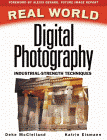 Note: I took all the photographs here with my digital camera. Click on the image to see a large picture. These pictures show the kind of quaility that can be achieved with today's digital technology.
Note: I took all the photographs here with my digital camera. Click on the image to see a large picture. These pictures show the kind of quaility that can be achieved with today's digital technology.

Understanding Digital Technology
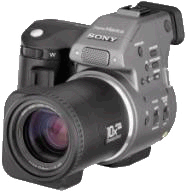 Digital Photography is a process where pictures are taken to a computer disk or memory card rather than film. The image is focused on a computer chip inside the camera and is instantly converted to an image that you can
see on the screen on the back of your camera. The image on the screen is what the camera is actually seeing and when you push the button to take the picture, the camera records that moment into the camera's memory as a
picture of that instant. The memory of the camera can be a floppy disk, like the ones your computer uses, or memory cards or sticks that store the images.
Digital Photography is a process where pictures are taken to a computer disk or memory card rather than film. The image is focused on a computer chip inside the camera and is instantly converted to an image that you can
see on the screen on the back of your camera. The image on the screen is what the camera is actually seeing and when you push the button to take the picture, the camera records that moment into the camera's memory as a
picture of that instant. The memory of the camera can be a floppy disk, like the ones your computer uses, or memory cards or sticks that store the images.
 Unlike rolls of film, the disks or memory cards are reusable and can be recorded over an unlimited number of times. When the camera memory fills, you have to transfer the pictures to your computer before you can take
more pictures. If you are using floppy disks then you just put in more blank disks. If you have extra memory cards or memory sticks, you would put in a new stick. As long as you have disks or memory cards and your
batteries stay charged, you can keep taking pictures forever. If there is a computer near you can dump the pictures into the computer and keep taking new pictures. And the computer can be a laptop computer that you
brought with you. When you have the pictures on computer, your camera is empty again and can take more pictures. It's just like changing rolls of film, except that film costs money and the memory is reusable.
Unlike rolls of film, the disks or memory cards are reusable and can be recorded over an unlimited number of times. When the camera memory fills, you have to transfer the pictures to your computer before you can take
more pictures. If you are using floppy disks then you just put in more blank disks. If you have extra memory cards or memory sticks, you would put in a new stick. As long as you have disks or memory cards and your
batteries stay charged, you can keep taking pictures forever. If there is a computer near you can dump the pictures into the computer and keep taking new pictures. And the computer can be a laptop computer that you
brought with you. When you have the pictures on computer, your camera is empty again and can take more pictures. It's just like changing rolls of film, except that film costs money and the memory is reusable.
 Unlike film cameras, digital cameras have no film to develop. You don't have to run down to the one hour photo lab and pay them to get pictures. The instant you take the picture, it's ready to view on the camera or your
computer screen. You don't have to wait one hour and pay for developing or prints. The pictures are ready instantly. There's no cost in film or developing. There is no cost in taking pictures with a digital camera. And
since most digital cameras have rechargeable batteries, you don't even have to buy batteries. Digital photography is virtually free.
Unlike film cameras, digital cameras have no film to develop. You don't have to run down to the one hour photo lab and pay them to get pictures. The instant you take the picture, it's ready to view on the camera or your
computer screen. You don't have to wait one hour and pay for developing or prints. The pictures are ready instantly. There's no cost in film or developing. There is no cost in taking pictures with a digital camera. And
since most digital cameras have rechargeable batteries, you don't even have to buy batteries. Digital photography is virtually free.
With a film camera you usually have to develop the whole roll and get prints of everything. You don't have that problem with digital. If you take a picture you don't like, you see it right away and you can delete it and take a new one. You save only the best pictures and get rid of the ones you're not happy with. Digital photography lets you see the pictures instantly without having to wait and pay for a whole roll just to find out to late that none of the pictures came out very good. And with digital pictures, you don't have to worry about the photo lab ruining your film because there's no film to ruin.

Getting Prints
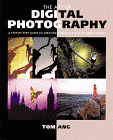 Printing digital pictures is a simple process. Once the pictures are in your computer, all you have to do is print them to your color printer. And you can print just the best ones and as many copies as you want at
whatever sizes you want. Unlike film where you're limited to certain sizes and have to print the whole roll, with digital you only print the ones you want and you can print as many copies as you want at whatever size
you want. And all it costs you is ink and paper.
Printing digital pictures is a simple process. Once the pictures are in your computer, all you have to do is print them to your color printer. And you can print just the best ones and as many copies as you want at
whatever sizes you want. Unlike film where you're limited to certain sizes and have to print the whole roll, with digital you only print the ones you want and you can print as many copies as you want at whatever size
you want. And all it costs you is ink and paper.
The quality of your prints depends on the quality of your color printer. The better your printer is, the better the prints are going to be. I haven't tried every printer on the market, but I've always like Hewlett Packard printers, especially their new printers with PhotoRet level 3. These printers can give you resolution to 2400x1200 dots per inch, which is actually better than "photo quality". I can print pictures that look like a magazine cover. These HP printers start as low as $199 right now. With a good digital camera and these color printers, you not going to miss film at all.
 One question that often comes up is what kind of paper to buy? For most printing what I would use is something equivalent to the HP "Bright White Inkjet Paper". This paper will cost you 2 cents a sheet as compared to
photocopy paper at 1/2 cent a sheet. Using this paper you can print photos and put them in frames that will look as good or better than regular pictures. And your only cost is paper and ink.
One question that often comes up is what kind of paper to buy? For most printing what I would use is something equivalent to the HP "Bright White Inkjet Paper". This paper will cost you 2 cents a sheet as compared to
photocopy paper at 1/2 cent a sheet. Using this paper you can print photos and put them in frames that will look as good or better than regular pictures. And your only cost is paper and ink.
 If however you want even better quality you can buy the glossy paper that is like the "HP Glossy Photographic Paper" and sells for about 50 cents a sheet. This will produce a quality that is like a magazine cover. But
it's not as easy as just sticking the better paper in and printing. If you are using an HP Printer what you have to do is tell your software driver what kind of paper you're using. Then, on HP printers you take it out
of the PhotoRet mode so it goes into it's highest resolution. To print this quality the printer and software driver are working hard and you have to have 400 megs of free space on your computer just for the temporary
files and it might take 15 to 20 minutes to print. But, you end up with an awesome picture, and you can start a print and go watch TV while it's running. But I usually am quite happy with the 2 cent copies as they are
not only as clear as a photograph, but have a brighter range of colors.
If however you want even better quality you can buy the glossy paper that is like the "HP Glossy Photographic Paper" and sells for about 50 cents a sheet. This will produce a quality that is like a magazine cover. But
it's not as easy as just sticking the better paper in and printing. If you are using an HP Printer what you have to do is tell your software driver what kind of paper you're using. Then, on HP printers you take it out
of the PhotoRet mode so it goes into it's highest resolution. To print this quality the printer and software driver are working hard and you have to have 400 megs of free space on your computer just for the temporary
files and it might take 15 to 20 minutes to print. But, you end up with an awesome picture, and you can start a print and go watch TV while it's running. But I usually am quite happy with the 2 cent copies as they are
not only as clear as a photograph, but have a brighter range of colors.
Besides printing your pictures on a color printer, you can also take your pictures in to many photo labs to get prints on the same photo paper that film pictures are printed on. There are also places on the Internet you can email your pictures to if you want to get traditional prints. So if you like traditional photo paper, you can stay with it. But most photo labs aren't set up for one hour pictures from disk, so it will take longer to get your pictures.
It could be said that your pictures will actually get better with age. In the future there will be new technology to display your digital pictures and better printers to print them. It's safe to say that ten years from now that the pictures you print will be better than they are today. That happens to me every time I get a new printer. Because of the increase in quality I often print new copies and put them in the frame over the old picture. Over time, it just keeps getting better and better.

Saving your Digital Pictures
 Unlike film and photo print pictures, digital pictures literally last forever. They don't deteriorate with age. Your pictures will be exactly the same 1000 years from now as they are today. That's because your picture
is just a file that contains a bunch of numbers and those numbers don't change. The pictures are stored on your computer hard disk and can stay that way forever.
Unlike film and photo print pictures, digital pictures literally last forever. They don't deteriorate with age. Your pictures will be exactly the same 1000 years from now as they are today. That's because your picture
is just a file that contains a bunch of numbers and those numbers don't change. The pictures are stored on your computer hard disk and can stay that way forever.
There is one thing to remember however. If your hard disk has the only copy and it fails you can lose all your pictures. To prevent this from happening you can find some free web site and set up a family photo album so that if you're hard disk fails, you can just get a new drive and download them from the Internet. Another solution is to email your pictures to friends and family and ask them to store them on their computers. That way there's more than one copy.
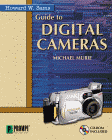 Unlike copying pictures all digital copies are exactly like the original. You can copy the picture millions of times and lose absolutely nothing at all. So if you email a picture to a dozen friends, their copy is
exactly as good as your copy. And making additional digital copies costs you nothing at all. Your friends can print out copies on their printers and they are just like the original.
Unlike copying pictures all digital copies are exactly like the original. You can copy the picture millions of times and lose absolutely nothing at all. So if you email a picture to a dozen friends, their copy is
exactly as good as your copy. And making additional digital copies costs you nothing at all. Your friends can print out copies on their printers and they are just like the original.
You might be wondering how much space this uses on your disk and if it will fill your hard drive. The short answer is no. Most of my pictures are about 200,000 bytes and 8 gig hard drives are common. This a drive will hold about 40,000 pictures. If you take that many pictures, then all you need to do is buy a bigger hard disk. Newer digital cameras that offer higher resolution will make bigger picture files. But hard disks keep getting bigger and cheaper all the time too so I think it's safe to say that filling up your computer isn't going to be a problem.

Editing your Pictures
 Another advantage of digital pictures is the ability to edit the picture before you print it. Once you load it into your computer it's easy to improve the picture and get rid of problems in a way that would be difficult
to do with film. There are a lot of good software tools like Paint Shop Pro that allow you to do very good digital editing right on your own personal computer.
Another advantage of digital pictures is the ability to edit the picture before you print it. Once you load it into your computer it's easy to improve the picture and get rid of problems in a way that would be difficult
to do with film. There are a lot of good software tools like Paint Shop Pro that allow you to do very good digital editing right on your own personal computer.
What kind of editing would you want to do? Lots of things. The easy stuff is just general tuning, making the picture lighter or darker, and adjusting the contrast, hue and color saturation. You can change the color mix allowing you to fine tune the look. Adding some yellow might hide the fact that the picture was taken on an overcast day. Or you might want to drop all the color out to do black and white prints.
 Other common changes is getting rid of things you don't want. Picture editors come with a copy tool that allows you to paint over an area with information from another area of the picture. This allows you to hide zits
and wrinkles but painting good skin over blemishes. So if your zit faced daughter is too embarrassed to have her picture taken because she thinks she'll be remembered as "pizza face", you can remove the pizza and hide
her complexion flaws. You can also change her skin color to giver her an instant tan. For smokers, you can outline the mouth and blue shift the color range and those yellow teeth turn bright white.
Other common changes is getting rid of things you don't want. Picture editors come with a copy tool that allows you to paint over an area with information from another area of the picture. This allows you to hide zits
and wrinkles but painting good skin over blemishes. So if your zit faced daughter is too embarrassed to have her picture taken because she thinks she'll be remembered as "pizza face", you can remove the pizza and hide
her complexion flaws. You can also change her skin color to giver her an instant tan. For smokers, you can outline the mouth and blue shift the color range and those yellow teeth turn bright white.
Other effects let you soften or sharpen pictures or do very cool digital effects. One effect I'm fond of is called "dry brush" which allows you to take a picture and make it look like a water color painting. Someone looking at it close would think it was a painting, but far away it looks like a picture. You can fool around and have a lot of fun with an image before you print it out or email it to your friends.
I'm not artist, but these picture tools a very easy to use, and once you learn them, you can take a not so great picture and really improve it. It gives you the option of fixing a picture after you take it so that you're not stuck with what you got.

Digital movies
Modern digital cameras aren't limited to still pictures. Most new cameras will also do short digital movies with both sound and video in standard MPEG format. MPEG is a standard movie file format than can be copied onto a web site and be viewed by most any modern computer. Generally these movies are limited to 15-60 seconds, but you can have a lot of fun in this period of time sending little videos by email to your friends. And you're not going to get moving video with a film camera.
You can bapture baby's first steps or first words and instantly mail them to your parents. It's great! Click Here and see Little Lexie try to talk. Click Here to see Lexie discover her feet.

Other Digital Advantages
Digital pictures can be instantly sent by email. I took some pictures of a friend's new born baby and sent then instantly by email to "grandpa" several hundred miles away. I could also have posted them on a web site to instantly announce a birth. Digital picture are internet ready and do not require that they be "scanned in" like film pictures. You can take a picture and have it on the web in two minutes. This is especially good for journalists who can get that breaking news photo on the web site within minutes of the event.
Although digital cameras might cost more than film cameras, that price gap is going to vanish before long. It doesn't take very many pictures before the camera has paid for itself in savings on film and processing. If you take very many pictures, you find that digital is a big savings in costs because digital is as close to free as you can get. And free is good.
 You'll notice that you take more pictures with a digital camera than you do with film as long as you have enough storage capacity or a way to dump them to a computer. Because there's no cost, you just keep taking
pictures. You're not thinking about "wasting film" and making it worth it, or the costs of developing the prints later. For example, I could got to a friend's house to take pictures of her baby. With a film camera I
might shoot a roll of 24 figuring that's enough. A roll of film and developing will probably run $15-$20 especially if I get double prints so both of us can get them. But with digital there is no cost. So, if the kid is
being cute I might take 200 pictures and not even think about it. No longer do I think in terms of "rolls" or "finishing out a roll". I take pictures till I decided I have enough. It creates a different way of thinking.
You'll notice that you take more pictures with a digital camera than you do with film as long as you have enough storage capacity or a way to dump them to a computer. Because there's no cost, you just keep taking
pictures. You're not thinking about "wasting film" and making it worth it, or the costs of developing the prints later. For example, I could got to a friend's house to take pictures of her baby. With a film camera I
might shoot a roll of 24 figuring that's enough. A roll of film and developing will probably run $15-$20 especially if I get double prints so both of us can get them. But with digital there is no cost. So, if the kid is
being cute I might take 200 pictures and not even think about it. No longer do I think in terms of "rolls" or "finishing out a roll". I take pictures till I decided I have enough. It creates a different way of thinking.
I went on a trip for two weeks with my digital camera. Stopped in Portland Oregon and San Francisco. I took a lot of pictures myself, but also let my friends take pictures too. One friend had products she was selling on the web and we took a few hundred pictures for her web site. I then took a lot of pictures of the Golden gate Bridge, houses in San Francisco, and my sister's cats, and took many more pictures than I would have taken with a film camera. After two weeks we shot 800 pictures, and it didn't cost me anything. With a film camera I just wouldn't have taken nearly that many pictures.
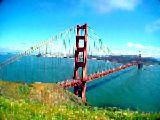 Digital cameras are also a "green technology". Because it doesn't use film and photo processing it saves on silver and a lot of other nasty chemicals that don't have to be disposed of or dumped into the environment. All
you use is a little electricity to both take the picture, view it on your computer, and email it to your friends. It contributes to making the world just a little cleaner than using film.
Digital cameras are also a "green technology". Because it doesn't use film and photo processing it saves on silver and a lot of other nasty chemicals that don't have to be disposed of or dumped into the environment. All
you use is a little electricity to both take the picture, view it on your computer, and email it to your friends. It contributes to making the world just a little cleaner than using film.
Digital cameras allow you to see the picture instantly so you don't have to guess or wonder how the picture came out. If someone's mouth is open or their eyes are closed, you know it right away. This eliminates having to "hope" the pictures came out alright. What you see is what you get. You can even show everyone the picture on the screen on the back of the camera so your friends can see it now. For camera's with disk drives you can copy the disk and give them a copy right now.
Digital cameras can take pictures more accurately. Film cameras have good electronics to control the camera, but the computers inside film cameras have to "guess" what light the film will be exposed to. In a digital camera the CCD element allows the camera to actually "see" the picture before it take it. Because the camera can see the picture, the computer inside can more accurately adjust the electronics to take the best picture possible.
 Another issue is privacy. Sometimes you're in the mood to have a little fun with the camera and you want to take some pictures that you don't want just "anybody" to see. This includes the guy at the photo lab who might
run off an extra set of your pictures for his friends or a porn site. Digital pictures don't need to be developed so you never have to deal with strangers seeing your private photography collection. You can take the
pictures and keep them to yourself, or delete them after you had your fun.
Another issue is privacy. Sometimes you're in the mood to have a little fun with the camera and you want to take some pictures that you don't want just "anybody" to see. This includes the guy at the photo lab who might
run off an extra set of your pictures for his friends or a porn site. Digital pictures don't need to be developed so you never have to deal with strangers seeing your private photography collection. You can take the
pictures and keep them to yourself, or delete them after you had your fun.
With digital pictures you can see what you have when you take the pictures. A photo lab can make a mistake and ruin your roll of film causing those graduation pictures to be lost forever. With digital, as long as you have backup copies you can never lose your pictures. And if you have backup copies on a friends computer, and your house burns down, you picture collection is safe. With film and prints, the fire might take those wedding pictures and they are gone forever. Digital pictures, properly backed up on an off site computer, are never lost due to natural disasters.

Advantages of Film
Unless you get a very expensive digital camera, film is still higher resolution than digital. If you're a professional photographer and want to blow up an image to fill a billboard, you still want film. When film is magnified, you still get more detail than you get with today's digital technology. That may change in the future, so keep that in mind.
Another advantage of film is that you can take a picture and certify that it hasn't been tampered with. If you take pictures and give someone the undeveloped roll, they know that the pictures are authentic. Digital is easily manipulated and if the pictures are to be used as evidence, an undeveloped roll can be trusted more that a picture on disk that could have been altered.

Sony Digital Mavica Cameras
 I haven't tried all the cameras on the market but I have looked around and I like the Sony Mavica series cameras. Why? I've always likes Sony products in general. Sony tends to make good stuff. I just keep finding
myself wanting to buy it. But specifically, I like the idea of being able to take pictures to floppy disk. And the Mavica series cameras have that feature. What I like about floppies is two things. First, there is no
limit to the number of pictures you can take as long as you got floppies, which cost only 25 cents each. I got an extra rechargeable battery so my limit is how long the batteries last and that's a long time. I can
safely get 300 pictures without having to recharge the batteries. That's a lot of pictures.
I haven't tried all the cameras on the market but I have looked around and I like the Sony Mavica series cameras. Why? I've always likes Sony products in general. Sony tends to make good stuff. I just keep finding
myself wanting to buy it. But specifically, I like the idea of being able to take pictures to floppy disk. And the Mavica series cameras have that feature. What I like about floppies is two things. First, there is no
limit to the number of pictures you can take as long as you got floppies, which cost only 25 cents each. I got an extra rechargeable battery so my limit is how long the batteries last and that's a long time. I can
safely get 300 pictures without having to recharge the batteries. That's a lot of pictures.
The floppy drive lets me instantly make copies for friends, so I can take pictures of someone and hand them the disk. This gives me a chance to earn a little money with my camera. I can take about 7 high resolution pictures on a disk, show a person the pictures, and charge them $15 for about 15 minutes of my time. The floppy allows me to give someone a copy of the pictures instantly, and the camera allows me to copy a disk so I can keep a copy for myself if I want.
My first digital camera was the Sony MVC-FD91, which is now obsolete. It's been replaces by the Sony MVC-FD95 which, I hope to get soon.

Selecting a Digital Camera - What features are Important
Not everyone is alike so what's important to me might not be important to you. We all want the perfect camera will all the features and cost nothing, but that camera isn't available (yet). So I'm going to mention different features to help you consider what's important for you and the kind of pictures you want to take. And what I like may not be what's important to you.
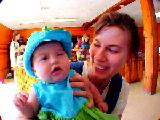 Speaking of lenses, I also got a clip on wide angle lens. This clip on gives me a very wide angle that allows me to take more interesting shots of people. The lens adds some interesting curvature to the picture that
draws you into the center and creates a dynamic effect. I really like the clip on wide angle lens.
Speaking of lenses, I also got a clip on wide angle lens. This clip on gives me a very wide angle that allows me to take more interesting shots of people. The lens adds some interesting curvature to the picture that
draws you into the center and creates a dynamic effect. I really like the clip on wide angle lens.
Mega pixels are how many "dots" are used to make up the picture. My Sony MVC-FD91 has a maximum resolution of 1024x768, which is only 0.8 mega pixel, less than one. But as you can see, it takes very good pictures. As you can see, the full size picture is very large on your screen. Even at this size it can be blown up to an 8x10 picture without any noticeable grain effect. A lot of that comes from very smart print drivers that are almost "magic" in my opinion. So for most photographers, even 1024x768 is good enough.
However, if you're a professional and doing fine detailed work then you might want to spend the extra money and get the highest resolution you can get. The more mega pixels, the more information you have to work with. But there is a down side to higher resolution. The more resolution, the bigger the pictures are and the more they use up the storage space in your camera. That means that if you're going to buy a high mega pixel camera then you also have to buy extra memory cards to store those images and you'll get fewer pictures than you will on lower resolution. If you're taking pictures to put on web sites, what's the point in starting with a picture that's 1600x1200 (2.1 mega pixel) and then having to shrink it to 160x120 for the web page? If you take pictures that are 640x480, they are still very large pictures for web pages, and you can get a lot more in your camera. So, depending on what you are doing, more is not necessarily better.
My Sony camera takes pictures that are 1024x768 and create JPEG files that average about 200,000 bytes. I can get 7 pictures on a floppy disk. Other cameras use memory cards or memory sticks that are removable and are often available with 64 megs of storage. At 200,000 bytes per picture, you could store 320 good size pictures in a 64 meg card. And if you had two cards you could get twice that many. If you have a higher resolution camera, say 2.1 mega pixel, your pictures are going to be three times as big and you'll only get 100 shots before you have to dump. But, it all depends on how many pictures you plan to take. And keep in mind that digital photography alters the way you use a camera, so 100 shots might sound a lot on a film camera, but it's nothing on a digital. Because there's no cost, you want to take more pictures.
Some cameras have PCMCIA slots that are the same as laptop computers that allow you to connect a number of interchangable devices. Besides memory cards there are actually tiny hard disk drives that fit into these cameras. IBM makes one that holds 340 megabytes. You can get a LOT of pictures on a drive this size.
One thing I like about floppy disk based cameras is that your storage is virtually unlimited because you can keep swapping floppies. But, a floppy only holds 1.4 megs and you have to swap disks often. It's a tradeoff, but at the time I bought my first digital camera they didn't have 64+ megs on a memory card and I didn't want to limit myself to a camera that could only take 32 pictures.

Features of Digital Photography

|

|

|

|
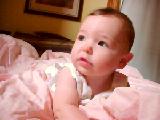
|
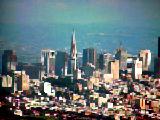
|

Where to Buy your Digital Camera
Here's a good place to buy digital cameras. They have a lot of discounts and a big selection and a good search tool that allows you to find products easilly. It's already set up to search for digital cameras. All you have to do is click on GO.
 |
is owned by Marc Perkel. [ Skip Prev | Prev| Next 5 | Random | Next | Skip Next ] WebRing slow? See List. Want to join the ring? Do It! |
 |
|
